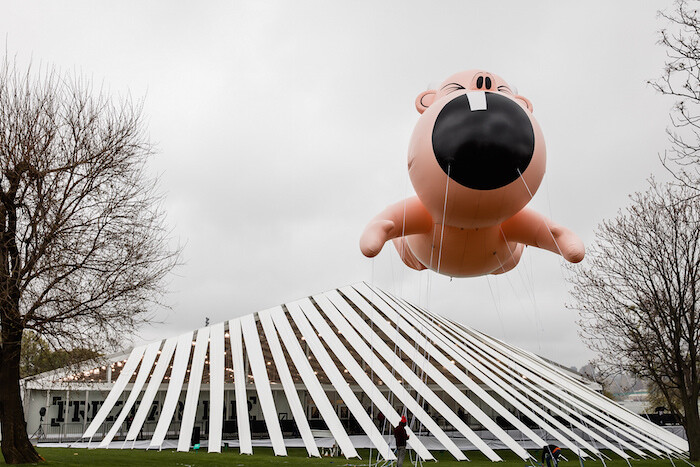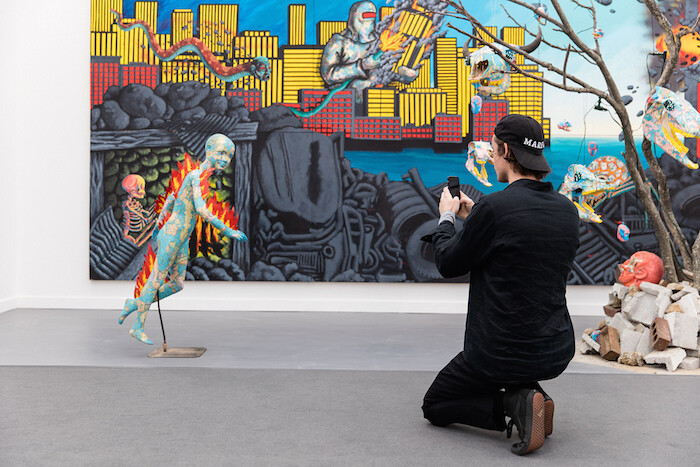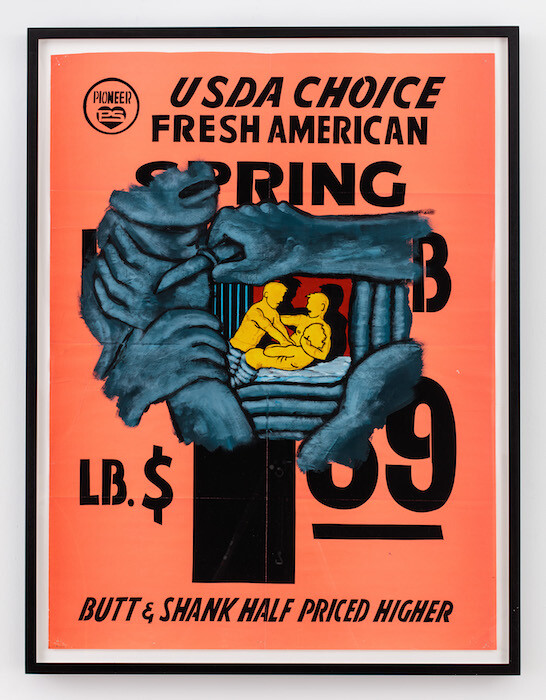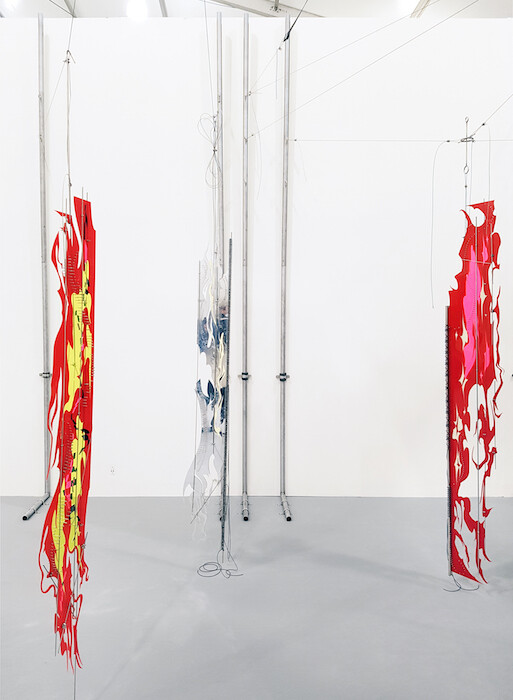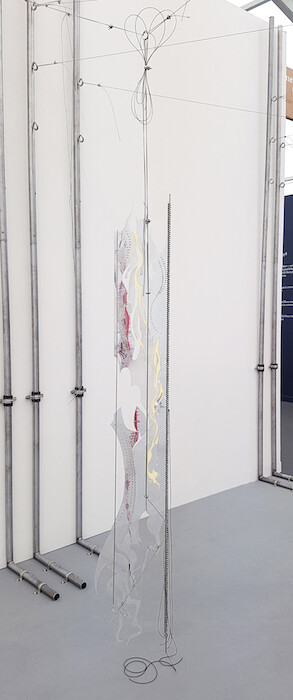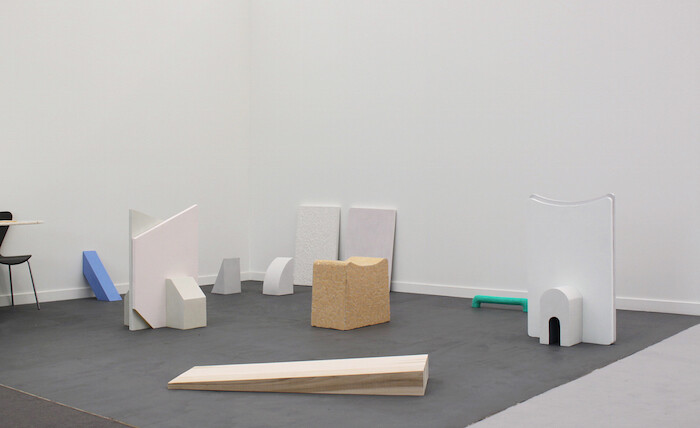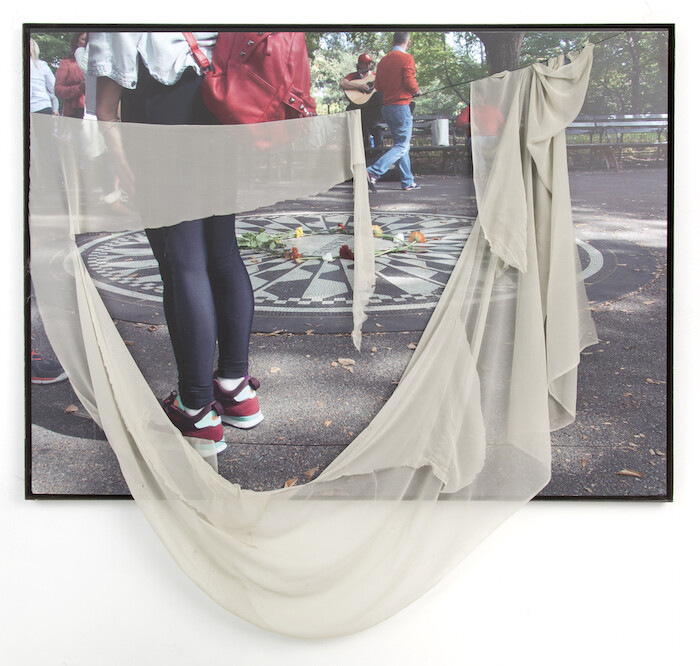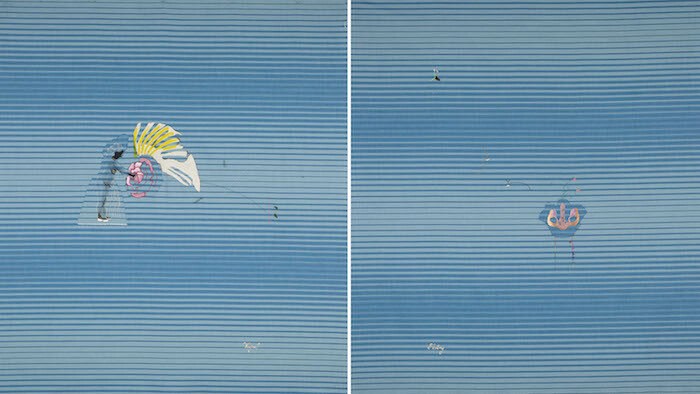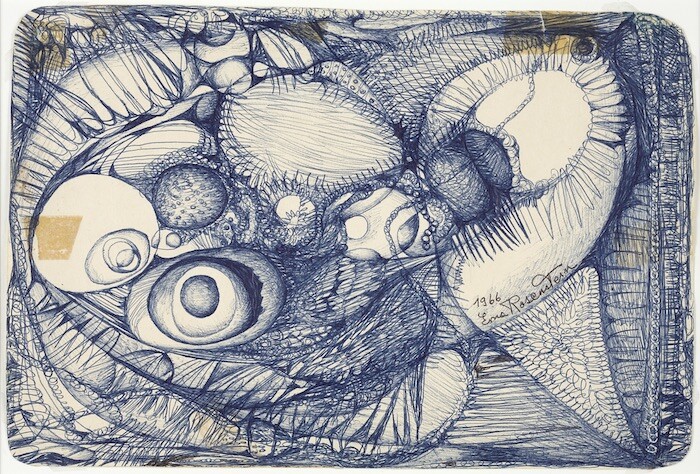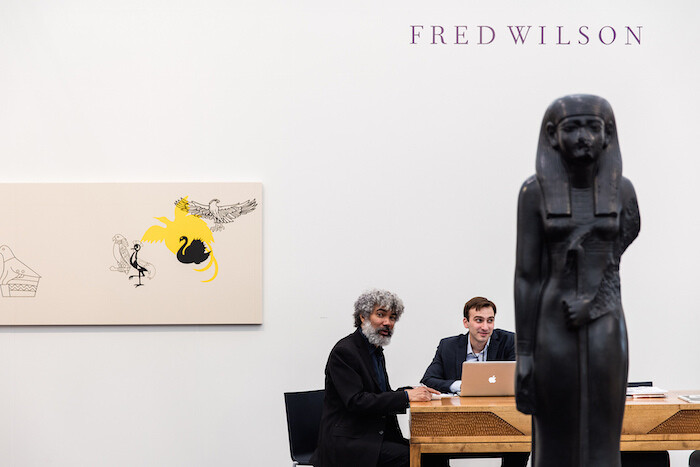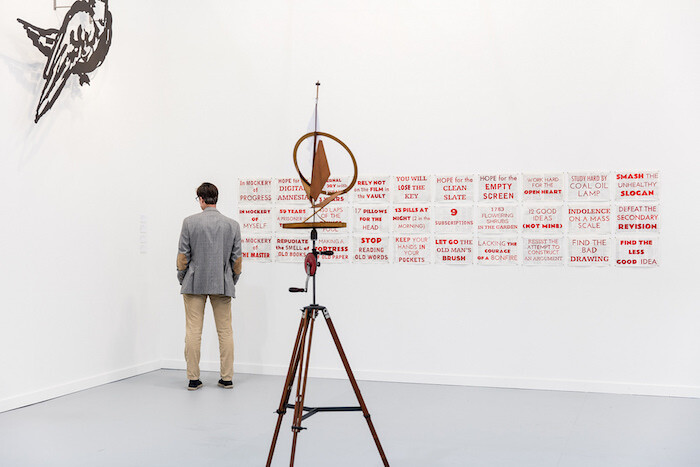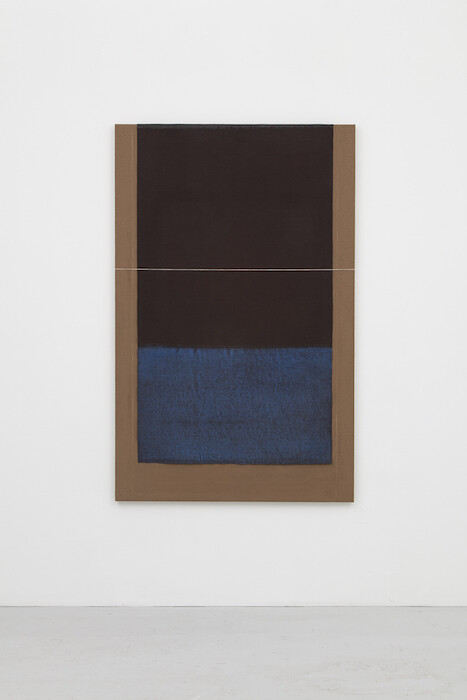On Wednesday, the day of Frieze New York's invitation-only preview, a friend of mine, another part-time art writer, tweeted: "Feels like a good weekend to go to something you loathe, run into people you sort of know, and make small talk about the inanity of it all." Those who work in the contemporary art world typically approach major art fairs with a unique blend of trepidation, begrudging participation, and barely contained glee at being able to tell everyone just how busy and sleep-deprived you are for an entire week. While taking a masochistic delight in being overworked is nothing new to the art world—in fact, it could and has been argued that our longstanding tradition of eliding the distinction between work and leisure is precisely the economic model for an overworked and underpaid present—it's a coping strategy that feels especially resonant as art fairs become increasingly numerous and integral to its fabric.
Frieze in particular is synonymous with the rise of an event culture within the art world, and this year's iteration only serves to expand this tendency. Once again presenting a series of talks, specially curated sections, site-specific commissions, an education component, and a meticulous selection of hip New York eateries, in addition to booths from over 200 international galleries, this year the fair also featured a series of new prizes, the first New York edition of Frieze Week magazine, and a dedicated new Reading Room boasting a “curated selection” of art and culture publications. While the ever-expanding infiltration into the art world of such markers of the so-called experience economy has a tendency to raise a few eyebrows in other parts of the world, particularly when attached to hefty ticket prices—recall the outcry last year when Frieze London hosted a talk bearing the subtitle “Can artists still afford to live in London?” at an event that cost 40 pounds to attend—in a New York of the High Line, the new Whitney, and 25-dollar entry into all major museums, Frieze's expansive programming (with a 45-dollar barrier to entry, of course) feels par for the course.
All of that being said, Frieze is—to lift a word that recurs in the press release— typically far more “dynamic” than its main New York competitor, the Armory Show, and this year's version contained plenty of highlights. On entering the fair grounds, located on Randall's Island, by the North entrance, one is confronted with the first of Frieze NY's site-specific commissions, a giant inflatable balloon baby by Alex Da Corte (Free Money, 2016). While gleefully perverse with its unsettling, toothy grimace, the work sits firmly in the tradition of giant, kitsch, pop-sculpture that Isa Genzken has been doing much better for years. Immediately inside the fair proper are a number of standout booths. Of particular note, New York gallery P.P.O.W presented a rarely seen installation by David Wojnarowicz, which was commissioned by collectors Robert and Adriana Mnuchin in 1985 for the basement of their Upper East Side townhouse. Accompanied by drawings by the artist from the same era, Untitled (Burning Boy Installation) (1985) draws from the Mayan genesis myth of Popol Vuh, depicting an apocalyptic cityscape of Manhattan on six masonite panels. Scattered in front of these is detritus collected from the ruins of Alphabet City and the Bronx and two further sculptural elements, a life-size young boy, with paper flames shooting out of his body, running towards a dead tree with cinder blocks piled up around it and animal skulls dangling from its branches. It is a powerful and abrasive work, and one that is deeply specific to its moment in time in the New York art world—one that exists in uneasy relation to today’s, which is all too eager to trade on the former’s artistic legacy.
An enduring preoccupation with the urban fabric of New York can be found in some of the presentations from younger galleries in Frieze's Frame section, a designation for galleries established within the past eight years. Valerie Keane's installation for Paris gallery High Art features a series of cut-out plastic sculptures in silver and neon-red dangling from the criss-crossing wires of a chaotic stand-like structure within the booth. The actual sculptures, such as Orchid Code (2016), which have long been a staple of Keane's practice, are suggestive of blades in their sharpness, while their motifs recall the seedy architectural ornamentation of casinos, condominiums, and red-light districts, and convey a gritty urban vernacular that codes the city as a punishing material environment.
Also in Frame, Chicago gallery Night Club is showing work by Gordon Hall, whose elegant sculptures are informed by the New York artist’s background in performance. Consisting of softly colored drywall objects modeled after architectural, interior, and linguistic motifs, many of which are indexical to the artist's own body, the installation is designed to be rearranged daily into different object-based “sentences.” There is also a script, read daily by the artist and gallerist Matthew Steinbrecher, which draws out how the relationships between the installation’s objects also stand in for relationships between bodies.
In the Focus section, Los Angeles's Night Gallery presents a number of pieces by Rose Marcus, who blends her photographic practice with elements of installation. Imagine Red (2016) drapes a beige piece of silk from a string, which hangs in front of a photo of people congregating in Central Park—a man strums a guitar, and in the immediate foreground a girl stands in tights and a bright red backpack. Stripped of context, and seen against three other photographs of grainy, surveillance-style images taken inside New York’s Metropolitan Museum of Art, Marcus's work suggests an abstract and menacing but occasionally beautiful urban landscape.
It can be easy to forget amongst the anonymizing mass of booths, but art fairs aren't bad places to encounter work you're unlikely to see at a New York gallery anytime soon. This year, Rampa from Istanbul is showing the work of four Turkish and Eastern European artists, among which Nilbar Güreş was a personal favorite. Her work examines the cultural codes of gender and sexuality, and here was represented by two pieces on fabric and paper respectively; the former is cute and whimsical with its sparse stitching of figures onto soft blue fabric, playfully titled Die Gärtnerin: Vaginal Fisting (2014). There is a notably strong historical component to this year's fair, and a set of four drawings by mid-century surrealist Erna Rosenstein, who was recently included in the Jewish Museum's “Unorthodox” exhibition (2015–2016), were particularly refreshing for the oblique historical lens in which they were found: at the booth of Warsaw’s Foksal Gallery Foundation, among the works of other artists active in the Polish capital in the 1960s and 1970s.
Larger galleries, meanwhile, exude an air of business as usual, and many are presenting reliable bodies of work from their established artists. Fred Wilson at PACE is particularly satisfying, showing sculptural pieces from the last decade, eloquently playing with the iconographies of national and cultural affiliation and belonging. At Marian Goodman, a solo presentation by William Kentridge mixes his steampunk-esque sculptures, collages, and a stark new series of prints in Indian ink depicting mythological scenes. Corresponding with the artist's current exhibition at the gallery, Casey Kaplan is showing the work of N. Dash, which turned out to be one of the day's understated highlights. In dialogue with painting and post-minimal sculpture, Dash integrates fabric into multilayered assemblages (all Untitled, 2016) that, for all their austerity, possess a softness and tactility that make Casey Kaplan's booth feel like a sanctuary in a fair that otherwise tries far too hard to be excessive.
This year’s Frieze showed little evidence of the market slowdown on everyone’s lips, although the atmosphere at Wednesday’s preview felt a little more on the subdued side than might be expected. Indeed, if anything, the fair seems to be in an expansive mood, aware of its integral role both in supplying a market for sales, and in shaping the wider discourse. The market may ebb and flow, but even in leaner times there’ll still be plenty of panel discussions to attend.
